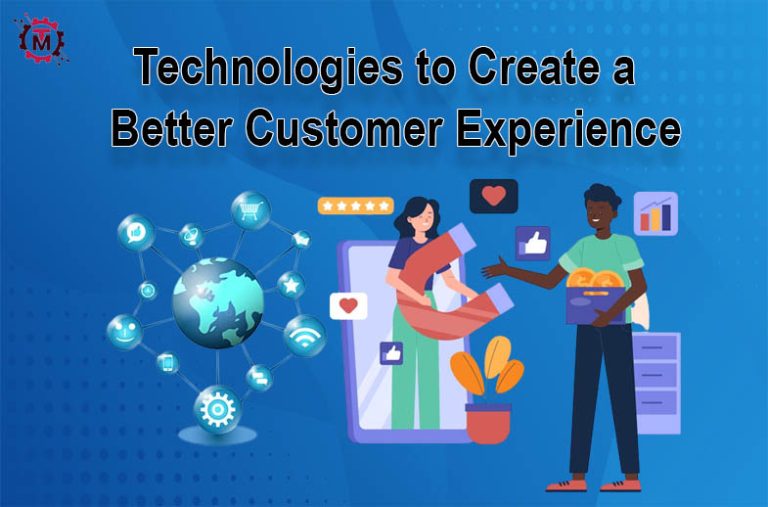Making your customer experience better is more important for your business than you think – especially if you have a diverse audience. Customer experience includes the experience of quality, customer service, and ease of use your customer experiences with your business.
Managing all of these things can be tough for businesses. However, there are some technologies available on the Internet that can help you create a better customer experience. That is what we will discuss in today’s blog.
You’re about to get valuable insights about some of the best technologies that you can use to enhance your customer experience. Let’s get into it.
Top Technologies to Create a Customer Experience
Some of the top technologies to create a customer experience are discussed below:
Cloud Softphone
Customers increasingly seek more personalised interactions when engaging with a brand, whereas companies are keen on reducing communication expenses while ensuring top-notch service for their clientele. Numerous communication service providers continuously enhance their offerings using a versatile white-label platform like Cloud Softphone. This software empowers business proprietors to infuse a personal touch into customer interactions, crafting tailored experiences. A White Label Softphone allows users to make internet-based calls using a computer, phone, or tablet while seamlessly operating on the cloud, mimicking the functionality of a traditional telephone. Users can dial numbers from anywhere with an internet connection and access various VoIP telephony features. Softphone services bolster business communication with enhanced accessibility, mobility, security, and flexibility.
Internet Of Things
The Internet of Things (IoT) is another technological advancement to enhance the customer experience. According to research findings, numerous companies embrace IoT solutions due to their manifold advantages, including cost reduction, brand-new product development facilitation, and an overall productivity upsurge. IoT technology empowers businesses to amass data from interconnected devices, enabling more effective customer engagement and creating a positive digital experience. Companies can harness this technology to bolster their promotional endeavours across various platforms, influencing customer purchasing decisions by disseminating special offers, discounts, and timely reminders. For instance, fitness products like FitBit enable customers to showcase their fitness achievements on social media platforms like Facebook, inspiring potential customers to acquire FitBit devices.
Read Also: How CRM Systems Improve Customer Experience
Virtual & Augmented Reality
Augmented reality (AR) and virtual reality (VR) represent revolutionary human communication and interaction advancements. Their influence spans various domains and is poised for further expansion as these technologies mature and evolve, particularly in customer experience. AR and VR applications and solutions are steadily gaining prominence in this arena. In the realm of B2B customer service, their transformative effects are already evident. These technologies empower customers to educate themselves about your company and address their issues more effectively. AR and VR are reshaping how sales representatives comprehend their customers, fostering heightened empathy and equipping them to propose more effective solutions. Visual and augmented reality are also beginning to shape the visual customer journey, with apps like Google Lens enabling customers to search by simply looking at an object, leading to a visual and mobile-optimized journey.
Chatbots
With the widespread use of smartphones and the availability of mobile search features, today’s consumers have come to expect immediate answers and instant access to the internet. Many marketers believe that the future lies in adopting chatbots for customer service. Forbes reports that millennials, in particular, have a favourable view of chatbots due to their ability to provide immediate satisfaction and convenience. Chatbots are AI-powered technologies designed to engage in conversations with human customers online. They offer round-the-clock support, addressing customers’ basic queries, identifying their everyday needs, and enhancing the overall customer experience. As a result, many businesses are incorporating chatbots into their customer service functions to meet the contemporary demand for instant support. Integrated with TD Bank’s mobile app, Clari leverages AI to offer deeper insights into customers’ financial decisions.

Location-Based Services
Location-based services are widely embraced across various industries because of their immense potential to enhance personalised and convenient customer experiences based on the customer’s precise location. Businesses can leverage the power of IP geolocation APIs to leverage valuable customer location data to elevate product awareness in strategic areas. Consider this scenario you’re about to launch several new coffee shops in different cities.
With location-based advertising, you can precisely target customers living in these cities, within a 900-meter radius of your shops, and those who’ve visited nearby coffee places. These ads will direct customers to a dedicated landing page with your nearest coffee shop’s address. These location-based services save time and effort in providing customers with precise company location information and offers and contribute to an enhanced customer experience.
Programmatic Advertising
Programmatic advertising leverages artificial intelligence and real-time bidding within demand-side platforms to automate the media buying process. It accelerates media purchasing, prioritising the target audience over specific ad placements. This technology empowers companies to understand their potential viewers more, even before acquiring ad space. Marketers define their objectives, specify the cost per click or impression, and create the ad, leaving the rest to AI, which efficiently matches customer profiles. This approach provides various advantages to businesses, such as reduced advertising costs, extended audience reach, increased transparency in ad placements, and enhanced targeting capabilities. Additionally, programmatic advertising continues to evolve, enhancing the overall customer experience due to its cost-effectiveness, real-time nature, and efficiency.
Final Verdict
So, these are some of the best technologies that you can try out to enhance your customer experience. These technologies are designed to help your business engage with and satisfy the needs of your customers so that they have a better experience using your product or service. We have discussed these technologies in great detail in the information given above.






